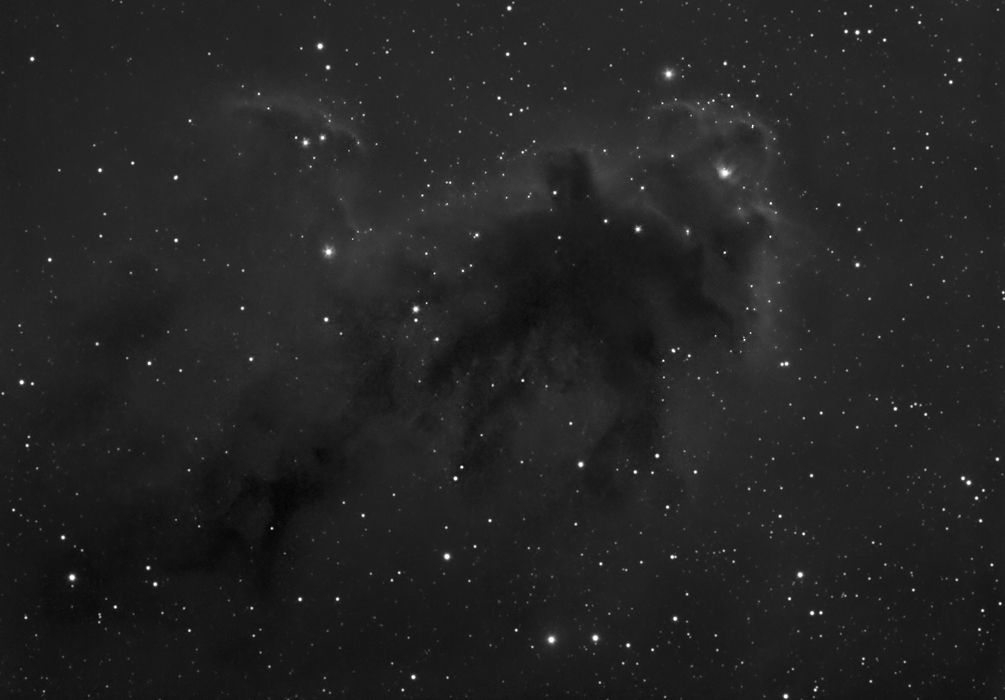Dark Cloud outside of Barnard's Loop (LDN1622)
Characteristics:
Magnitude: ?.
Size: FOV shown
here is approximately 1 degree.
Distance: ?
RA: 5h 52m 17s
Dec: +01 degrees 46' 09"
Description:
The Orion region is full of dark clouds and emission nebulae.
Although the most famous dark cloud is B33, the above
image shows a less frequently photographed target. This dark
cloud is referred to as LDN1622 (Lynds Dark Nebula catalog) located
just outside of Barnard's Loop and is shown in this
widefield view by Loke Tan in the central
left edge of this field. I did not anticipate how faint the
surrounding emission nebulosity would be, and even 4 hours cumulative
exposure is not enough to do it justice. Still, there is good
detail within the dark
cloud region itself, and the dark shading of the image gives it a
mysterious and somewhat foreboding quality.
Photographic Details:
Date: January 1
and 21, 2005.
Scope: Takahashi
Sky 90 at f4.5 with field flattener/focal
reducer, on a Losmandy G11 mount.
Autoguider: STV
with e-finder.
Camera: SXV-H9.
Filters: Ha
(13nm bandpass) from Astronomik.
Exposures: 12 x
10', unbinned (1/1/05), plus 15
x 8', unbinned (1/21/05). Total
exposure
time 4 hours.
Conditions:
1/1/05- Temperature 36 degrees F, below average transparency in part
due to
several thin clouds passing through, average seeing,
no
wind. 1/21/05- Temperature 0 degrees F, clear, average
transparency and seeing.
Post-processing:
No darks, flats,
or bias
frames used. Autoaligned in MaximDL, and sigma combined using the RC Sigma Reject Plugin for Maxim.
DDP done
in ImagesPlus, followed by levels
and curves adjustments in Photoshop CS. Sharpening was performed
using a combination of unsharp masking and
Lucy-Richardson deconvolution (PSF 5x5, 3 iterations, ImagesPlus) in
selected areas. I also used Neat Image to smooth out certain
regions, since the signal to noise ratio in the dark areas was
suboptimal due to the relatively short exposure time for this faint
object, even at f4.5.
Please
note: Graphics on this website may not be reproduced without
author permission.
Back to Nebulae
Home
